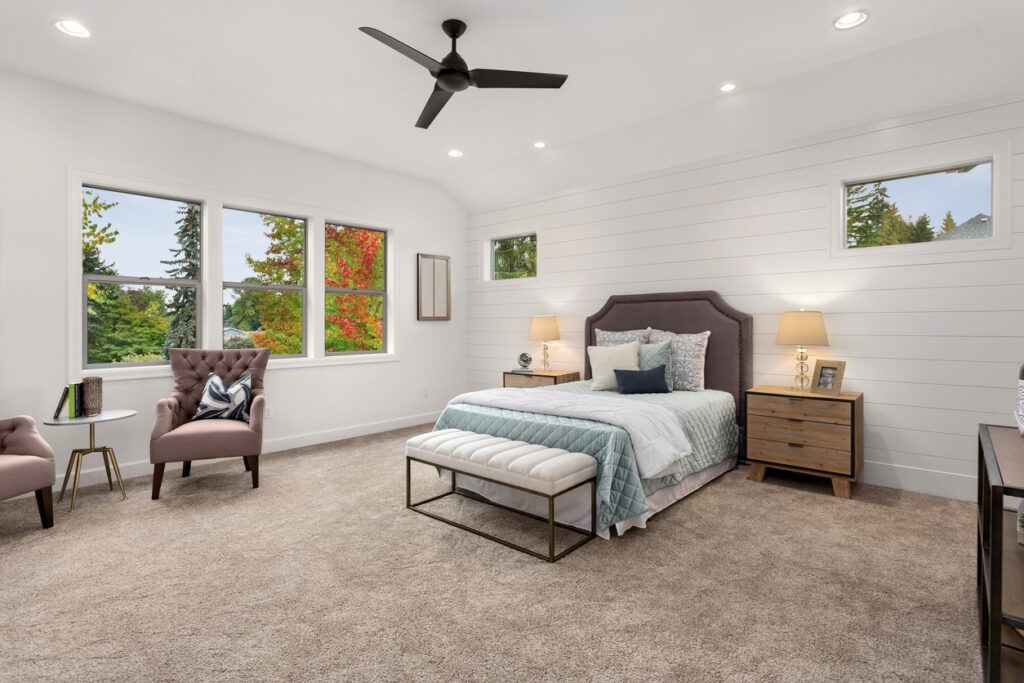If you have seniors residing in your home, you’ll want to make sure that their stay is as snug as snug can be!
Aged individuals are prone to suffering from a variety of physical and mental health issues, so it’s important to design an environment that accommodates their needs.
And even if they’re still as spry as ever, it doesn’t hurt to prepare for the looming possibility of their health slowly chipping away over time.
And as for the room adjustments, they aren’t too massive either—just a few tweaks and your elderly resident can get cozy in their newly-designed space.
Without further ado, here are a few tips for how to make a space elderly-friendly.
1) Make The Layout Seamless
A clutter-free home is a must for the elderly, and the reason is simple. As we age, our mobility and dexterity undergo a steady decline, making it harder for us to move our legs more freely.
As a result, we could end up bumping and hitting our limbs without meaning to. This could increase the risk of injury throughout the body. The elderly are especially prone to this, as their bones are frailer and their sensory awareness slows over time.
To minimize this risk, it’s vital to transform the elderly’s room in a way that’s as easily navigable as possible. Avoid clustering too many pieces of furniture in the middle of the room. Furthermore, keep everything clean and organized as well. Avoid putting daily necessities in hard-to-reach areas or spaces where our seniors have to bend; instead, keep everything necessary for them at eye level.

A more specific example would be to arrange the seating (whether it’s a couch or sofa set) so that it’s leaning back behind a wall. Seating is often one of the biggest pieces of furniture in the room, so having this obstacle cast to the side can make the room feel exponentially easier to walk through.
Furthermore, make sure that there’s enough space for your legs to squeeze into the coffee table and the seat. High-traffic areas of the room in general should have adequate spacing to enter. Seats and couches should also have side tables so that the room’s residents can easily access and place their items in a properly-designated place.
2) Use Furniture With Appropriate Heights
Our cartilage becomes thinner as we age, causing our joints to become stiffer and less flexible. As a result, elderly people tend to have a more difficult time bending and reaching lower heights.
Chores or things we do around the house that we don’t think twice about could actually be excruciatingly difficult (or even impossible) for our elderly companions. As such, it’s important to make sure that the furniture we choose is at an appropriate height for them.
For instance, if you get a coffee table for the room, make sure it’s at a level that’s accessible for seniors. The same goes for beds and seating. The optimal height for a chair for seniors is around 18 inches high. Furthermore, there should also be a footrest and armrests in the seating so that seniors can prop their feet up and rest their hands easily.
3) Make Your Flooring Slip-Resistant
Elderly folks are especially prone to this, given their declining physical health and slower reaction times.
To prevent this from happening, it’s important to make sure that the flooring of your room is slip-resistant. That way, seniors can move around without added risk.
You can make your room anti-slip in several ways. If your floor is made of concrete, you can texture it with a polymer grit additive to make it less slippery. You can also install rubber mats and anti-slip tapes on the floor to keep the entire place slip-free.
Regardless of the method, it’s important to take the necessary steps so that your elderly loved ones can move into their room with peace of mind.
4) Install Grab Bars
Besides anti-slip floors and appropriately-sized furniture, it’s also important to have grab bars installed in your elderly resident’s room, particularly their bathroom. Our muscles start to recede when we grow older, making it harder for our bodies to naturally support their weight.
Having a grab bar solves this issue. This metal bar gives the elderly ample support when they get in and out of the shower and toilet.
5) Get Enough Lighting
A lot of people overlook the importance of lighting in one’s room. Some people’s light bulbs are broken and they just don’t bother to replace them.
For elderly people, proper lighting is crucial. Their sensory awareness, as mentioned in an earlier point, decreases as they age. It’s easy for them to miss any hazardous objects laying on the ground, causing them to trip over.

To prevent this from happening, make sure that your room is well-lit. If the room gets a lot of natural sunlight, that’s great! But if not, invest in a couple of light sources for them to see more clearly.
6) Fit a Lounging Space
Your elderly will be staying in their rooms for the majority of their time. They’ll probably also choose one spot where they’ll do their day-to-day activities, like knitting, reading, or using their phone. You’ll want to take extra care of this space to ensure that comfort is maximized.
It doesn’t have to be fancy; simply propping a good-quality couch seat with pillows, a footrest, and a tableside would be heaven for many of these folks!
If your elderly resident’s room lacks enough space, you may consider moving them to an aged care facility like Kew Gardens Aged Care for a more appropriate venue. Putting your elderly resident in aged care also puts a lot of load off your shoulders since there’ll be licensed professionals who’ll provide all-around care for them.






